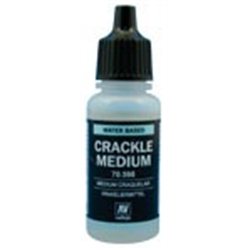Mainline Railways was a British model railway brand that operated between 1976 and 1983, introduced by Palitoy, the...
No products
Product successfully added to your shopping cart
There are 0 items in your cart. There is 1 item in your cart.
Search Tips
What is crackle medium?
Crackle medium is a weathering agent in a bottle, it has the appearance of a varnish.
When you have primed your model and added the base coat of colour, simply paint on the crackle medium and leave to dry. You will see that the paint now has a crackled effect exposing the colour beneath the base coat, almost like a crazy paving effect. You can then add a coat of a contrasting colour over the top to enhance the cracked paint effect.
This really does create a great finish when trying to replicate anything from old fences to the sides of buildings.
If you want a specific colour to come through the cracks, then you need to add an extra layer of paint before applying the crackle medium.
For example: I have just painted and exhaust shield on a vehicle and I wanted to show the aluminium in the cracks, so I first primed the piece with a grey primer then added a coat of aluminium. When dried, I added what I would call the base coat and then added the medium, this in turn gave me the effect I was looking for, of a cracked paint with aluminium showing through the cracks due to excessive temperatures from the exhaust
Click here to receive the tips weekly in your mailbox. You can unsubscribe at any time.








